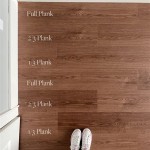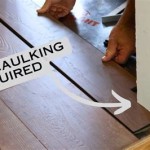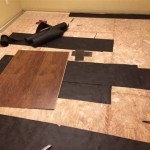Installing Vinyl Flooring on Uneven Concrete Floors: A Comprehensive Guide
Vinyl flooring has become increasingly popular for its durability, affordability, and versatility. However, installing vinyl flooring on uneven concrete can present some challenges. In this article, we will provide a comprehensive guide on how to successfully install vinyl flooring on uneven concrete, ensuring a flawless and long-lasting result.
1. Assess the Unevenness
Before embarking on the installation process, it is crucial to assess the extent of the unevenness in the concrete floor. Use a level or straightedge to check for dips, bumps, and slopes. Determine the severity of the unevenness and the appropriate methods to level the floor.
2. Prepare the Concrete Floor
The preparation of the concrete floor is essential for a successful installation. Remove any dirt, debris, or old floor coverings. If there are cracks or holes in the concrete, repair them using a concrete patch material. Ensure the floor is clean, dry, and free of any irregularities.
3. Leveling the Floor
If the unevenness is minor, self-leveling compound can be used to smooth out the surface. For more severe unevenness, a combination of leveling compounds and leveling pads or shims may be necessary. Follow the manufacturer's instructions carefully for proper application and drying times.
4. Install a Layer of Underlayment
Underlayment is a thin layer of material placed between the concrete floor and the vinyl flooring. It provides cushioning, helps absorb sound, and compensates for minor variations in the floor's levelness. Choose an underlayment that is specifically designed for uneven floors.
5. Installation of Vinyl Flooring
Once the floor is leveled and underlayment is installed, you can begin laying the vinyl flooring. Start by measuring and cutting the planks or tiles to fit the space. Use a level to ensure each plank or tile is installed evenly. Stagger the joints between adjacent rows to create a strong and durable floor.
6. Secure the Vinyl Flooring
Depending on the type of vinyl flooring you have chosen, it may require adhesive, nails, or locking mechanisms to secure it to the floor. Follow the manufacturer's instructions carefully for the appropriate installation method. Ensure the flooring is firmly attached to the floor to prevent movement or buckling.
7. Finishing Touches
Once the vinyl flooring is installed, add baseboards or molding around the perimeter of the room to cover any gaps and provide a finished look. Trim any excess flooring and clean the surface thoroughly to remove any debris or residue.
By following these steps and taking the necessary precautions, you can successfully install vinyl flooring on uneven concrete floors, achieving a smooth, durable, and beautiful flooring solution that will enhance the overall aesthetic of your space.

Vinyl Plank Flooring On Uneven Concrete

Vinyl Plank Flooring On Uneven Concrete

Should We Be Concerned About Vinyl Plank Installed Over Uneven Floors

Vinyl Plank Flooring On Uneven Concrete

How Can I Prepare Uneven Concrete Basement Floor For Vinyl Planks Home Improvement Stack Exchange

Flooring Is This Small Slope A Problem Installing Vinyl Plank Home Improvement Stack Exchange

How Can I Prepare Uneven Concrete Basement Floor For Vinyl Planks Home Improvement Stack Exchange

How To Prepare A Concrete Floor For Vinyl Flooring Parrys

Easy Ways To Install Vinyl Plank Flooring On Concrete

How Can I Prepare Slightly Uneven Tiled Floor For Vinyl Planks Home Improvement Stack Exchange
See Also







